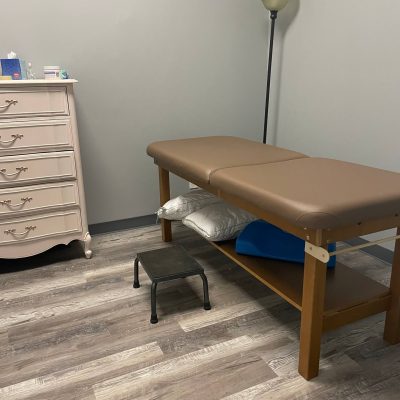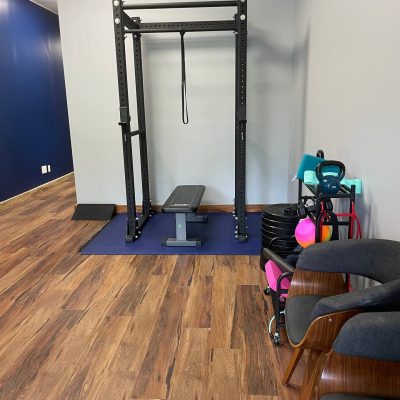Pelvic organ prolapse (POP) is a medical condition that occurs when one or more of the pelvic organs—such as the uterus, bladder, rectum, or the top of the vagina—descend or bulge into or outside the vaginal canal due to weakened pelvic floor muscles and connective tissues. This can result in discomfort, pressure, and a variety of symptoms. POP is more common in women, especially those who have been through pregnancy and childbirth, but it can also affect men.
The pelvic floor is a group of muscles, ligaments, and connective tissues that provide support to the pelvic organs and help maintain their proper position. Weakness or damage to these structures can lead to pelvic organ prolapse.
There are different types of pelvic organ prolapse based on which organ is affected:
- Cystocele: The bladder bulges into the front vaginal wall.
- Rectocele: The rectum bulges into the back vaginal wall.
- Rectal Prolapse: The rectum bulges out of the anus
- Uterine Prolapse: The uterus descends into the vaginal canal.
- Vaginal Vault Prolapse: The top of the vagina loses support and falls
- Enterocele: The small intestine descends into the vaginal canal.
Symptoms of pelvic organ prolapse can vary and may include:
- A feeling of pressure or fullness in the pelvic area
- A sensation of something “falling out” or a bulge in the vaginal area, or the actual presence of tissue outside the body
- Discomfort or pain in the pelvic region
- Problems with urinary and bowel function, such as urinary incontinence, frequent urination, or difficulty emptying the bladder or bowels
- Painful intercourse
- Lower back pain
Risk factors for pelvic organ prolapse include pregnancy, childbirth, aging, obesity, chronic constipation, chronic coughing, repetitive heavy lifting, and genetic predisposition.
Treatment options for pelvic organ prolapse depend on the severity of the condition, the symptoms experienced, and the individual’s overall health. Conservative management can include pelvic floor physical therapy, lifestyle changes to maintain a healthy weight and avoid constipation, using pessaries (devices inserted into the vagina to provide support), and even supportive undergarments. In more severe cases, or with failed conservative measures, surgical options may be considered.
If you suspect you have pelvic organ prolapse or are experiencing symptoms, a pelvic floor physical therapist can provide an accurate diagnosis and recommend appropriate treatment options based on your individual needs and circumstances.
Pelvic floor physical therapy is a specialized form of physical therapy that focuses on assessing and treating conditions related to the pelvic floor muscles and surrounding structures. It is often recommended as a conservative treatment option for pelvic organ prolapse (POP). Here’s how pelvic floor physical therapy can help individuals with POP:
- Assessment: A pelvic floor physical therapist will conduct a thorough evaluation to assess the severity and type of pelvic organ prolapse, as well as identify any contributing factors such as muscle weakness, tightness, abnormal posture, or coordination issues.
- Education: Patients are educated about the anatomy of the pelvic floor, the causes of POP, and factors that can exacerbate the condition, such as improper lifting techniques, improper breath mechanics, or poor posture.
- Pelvic Floor Muscle Training: Pelvic floor exercises are prescribed to lengthen and strengthen the pelvic floor muscles. However, it’s important to note that not all cases of POP require strengthening the pelvic floor musculature (kegels)!
- Biofeedback: Biofeedback techniques may be used to help patients gain awareness and control over their pelvic floor muscles. Sensors are used to provide visual or auditory feedback to help patients learn to contract and relax the muscles effectively.
- Manual Therapy: Hands-on techniques can be used to release muscle tension, release any scar tissue, improve organ mobility, and enhance pelvic floor muscle function. This can include internal and external soft tissue work.
- Posture and Body Mechanics: Patients are taught proper body mechanics, lifting techniques, and posture to reduce pressure on the pelvic floor and prevent worsening of the prolapse.
- Breathing Techniques: Learning how to coordinate breathing with pelvic floor muscle engagement and relaxation can decrease intra-abdominal pressure, which contributes heavily to prolapse.
- Functional Training: Patients are guided on how to apply proper pelvic floor engagement and body mechanics to their daily activities, including lifting, exercising, and activities of daily living.
- Customized Exercise Programs: Based on individual needs and abilities, a pelvic floor physical therapist can design a tailored exercise program to address muscle imbalances, improve pelvic floor support, and prevent further deterioration of the condition.
- Behavioral Modifications: Addressing contributing factors such as constipation, chronic coughing, and weight management can also be part of the treatment plan.
Pelvic floor physical therapy is a non-invasive and evidence-based approach that aims to improve pelvic floor muscle function and alleviate symptoms associated with pelvic organ prolapse. If you’re considering pelvic floor physical therapy, Magic City Physical Therapy has qualified and experienced pelvic floor physical therapists who can provide specialized care tailored to your needs.







